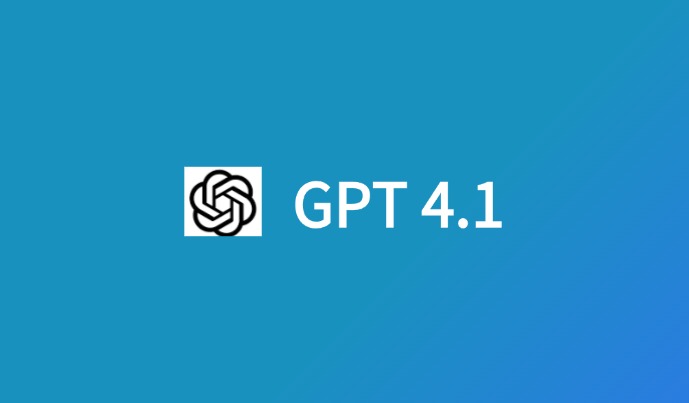La inteligencia artificial (IA) ha logrado avances significativos en diversos campos, transformando industrias y simplificando tareas complejas. Uno de esos avances es Resumen de imágenes con IA, donde los sistemas de IA pueden procesar e interpretar datos visuales de imágenes, lo que facilita la obtención de información sin necesidad de intervención humana. Este artículo profundiza en el papel de la IA y la Búsqueda profunda modelo de conversión y resumen de imágenes, proporcionando una descripción general de la tecnología, sus capacidades y usos prácticos.
Capacidades actuales del resumen de imágenes con IA
Herramientas impulsadas por IA, como Búsqueda profundaHan surgido herramientas para manejar tareas de procesamiento de imágenes, brindando resúmenes o descripciones de imágenes, gráficos y otros elementos visuales. Estas herramientas ofrecen información sobre cómo la IA puede interpretar datos visuales complejos, como gráficos, figuras y fotografías, haciéndolos más accesibles y comprensibles. Sin embargo, es importante aclarar algunos puntos sobre el estado actual de la tecnología:
- Modelos actuales de IA para el procesamiento de imágenes:Si bien los modelos de IA tradicionales se centran principalmente en el análisis basado en texto, modelos como Búsqueda profunda Se han desarrollado modelos para procesar y resumir imágenes. Estos modelos analizan las imágenes identificando patrones, objetos y elementos textuales dentro de ellas.
- Limitaciones del resumen de imágenes:Aunque a los modelos de IA les gusta Búsqueda profunda Aunque se han logrado avances significativos en el resumen de imágenes, aún quedan ciertos desafíos, como la interpretación de imágenes muy abstractas o visualizaciones de datos complejas. La eficacia de la IA para resumir imágenes a menudo depende de la claridad y la calidad de la imagen proporcionada.
Tecnología de resumen de imágenes con IA
La tecnología detrás del resumen de imágenes con IA combina varias técnicas avanzadas, que incluyen:
- Redes neuronales convolucionales (CNN):Estos modelos de aprendizaje profundo se utilizan para analizar los componentes visuales de las imágenes. Las CNN son particularmente eficaces para detectar patrones, formas y objetos dentro de las imágenes, lo que las hace ideales para tareas de clasificación y resumen de imágenes.
- Modelos de aprendizaje profundo:Resumidores de imágenes de IA como Búsqueda profunda Utilizan algoritmos avanzados de aprendizaje profundo para interpretar el contenido de las imágenes. Al entrenarse con grandes conjuntos de datos de imágenes etiquetadas, estos modelos aprenden a reconocer y describir varios elementos visuales dentro de una imagen.
- Procesamiento del lenguaje natural (PLN):Una vez extraídos los datos visuales, los algoritmos de PNL ayudan a convertir los objetos y patrones identificados en descripciones coherentes, garantizando que el resumen generado sea preciso y contextualmente relevante.
Posibilidades de integración
Los resumidores de imágenes de IA como Búsqueda profunda Se puede integrar con otras herramientas de IA para crear análisis más completos y holísticos. Por ejemplo, en trabajos de investigación que contienen tanto texto como imágenes, un resumidor de texto de IA puede manejar el contenido escrito, mientras que Búsqueda profunda Se centra en resumir las imágenes. Esta integración permite una comprensión más eficiente y completa del artículo, combinando elementos textuales y visuales en un resumen unificado.
Puntos clave
- Resúmenes de imágenes con IA como Búsqueda profunda Están revolucionando la forma en que interpretamos los datos visuales, haciendo que las imágenes sean más comprensibles y accesibles.
- Inteligencia artificial y aprendizaje profundo Modelos como las CNN permiten a los sistemas de IA identificar y procesar elementos visuales de las imágenes, convirtiéndolos en resúmenes útiles.
- Resumen de imágenes con IA Desempeña un papel vital en industrias como la investigación, la atención médica y la educación al mejorar la forma en que interactuamos con los datos visuales y los interpretamos.
- A pesar de los avances significativos, aún quedan desafíos, como el manejo de imágenes muy abstractas o de baja calidad, pero la investigación en curso continúa mejorando estas herramientas.
Ocasiones para utilizar la IA para el resumen de imágenes
Existen numerosos escenarios en los que el resumen de imágenes mediante IA puede resultar beneficioso:
- Investigación académica:Los investigadores suelen trabajar con gráficos, cuadros e imágenes complejos que deben interpretarse para su análisis. Los resumidores de imágenes con IA pueden ayudar a simplificar este proceso al convertir estas imágenes en resúmenes claros y concisos.
- Cuidado de la salud:Las imágenes médicas, como las radiografías y las resonancias magnéticas, pueden ser complejas de interpretar. Los resumidores de imágenes de IA pueden ayudar proporcionando descripciones rápidas y precisas de estas imágenes, lo que ayuda a los médicos y profesionales médicos en su diagnóstico y planificación del tratamiento.
- Operaciones comerciales:Las empresas que manejan grandes cantidades de datos visuales, como informes de investigación de mercado o imágenes de productos, pueden aprovechar los resumidores de imágenes de IA para extraer información clave y tomar mejores decisiones comerciales.
- Educación:Los materiales educativos suelen incluir diagramas, ilustraciones y gráficos. Los resumidores de imágenes con IA pueden convertir estos elementos visuales en descripciones comprensibles, lo que ayuda a los estudiantes y profesores a comprender mejor el contenido.
- Uso personal:Las personas que toman fotografías o escanean documentos para referencia personal pueden usar resúmenes de imágenes de IA para extraer rápidamente información importante de sus imágenes, lo que facilita la organización y el acceso a los datos visuales.
Tecnología detrás del resumen de imágenes con inteligencia artificial
El resumen de imágenes mediante IA se basa en una combinación de varias técnicas avanzadas:
- Redes neuronales convolucionales (CNN):Las CNN son modelos de aprendizaje profundo que se especializan en el procesamiento de imágenes. Ayudan a detectar características como bordes, formas y texturas dentro de una imagen.
- Modelos de aprendizaje profundo:Estos modelos analizan grandes conjuntos de datos de imágenes etiquetadas, lo que permite que los sistemas de IA aprendan a reconocer objetos, patrones y otros elementos visuales de manera eficaz.
- Procesamiento del lenguaje natural (PLN):Una vez analizado el contenido de la imagen, se utilizan algoritmos de PNL para generar descripciones o resúmenes significativos de los datos visuales, garantizando que el resultado sea relevante y legible para humanos.
Cómo la IA convierte imágenes en resúmenes: caso práctico
Imagínese que está trabajando con un documento de investigación que contiene un gráfico complejo que ilustra tendencias estadísticas. Búsqueda profundaEl modelo de IA procesa la imagen y proporciona una descripción de las tendencias y correlaciones representadas en el gráfico. Mientras tanto, un resumidor de texto maneja el contenido escrito del artículo, como la metodología y las conclusiones. Este enfoque dual garantiza que obtengas una comprensión integral de los elementos visuales y textuales del artículo.
Desafíos en la síntesis de imágenes con IA
Si bien los resumidores de imágenes con inteligencia artificial han logrado avances significativos, aún persisten desafíos:
- Imágenes abstractasLos sistemas de IA pueden tener dificultades para interpretar imágenes abstractas o muy estilizadas, especialmente cuando hay poca información contextual disponible.
- Calidad de imagen:Las imágenes poco claras o de baja resolución pueden obstaculizar la capacidad de la IA para identificar con precisión los elementos visuales, lo que genera resúmenes menos precisos.
- Datos visuales complejos:Las imágenes que contienen una gran cantidad de datos complejos, como gráficos científicos o infografías densas, pueden requerir modelos de IA más sofisticados para interpretar y resumir el contenido con precisión.
Conclusión
Resumen de imágenes de IA, liderado por modelos como Búsqueda profunda, está transformando la forma en que interactuamos con las imágenes y las interpretamos. Desde la simplificación de trabajos de investigación complejos hasta la ayuda a los profesionales médicos con datos de imágenes, los sistemas de IA están facilitando la extracción de información clave del contenido visual. Si bien aún existen desafíos en áreas como las imágenes abstractas y la calidad de la imagen, los avances continuos en la tecnología de IA continúan mejorando la precisión y la eficiencia de las herramientas de resumen de imágenes. Al integrar el resumen de imágenes con las herramientas de resumen de texto, la IA está allanando el camino para un análisis de investigación multimodal más completo y una toma de decisiones más rápida en varios campos.



